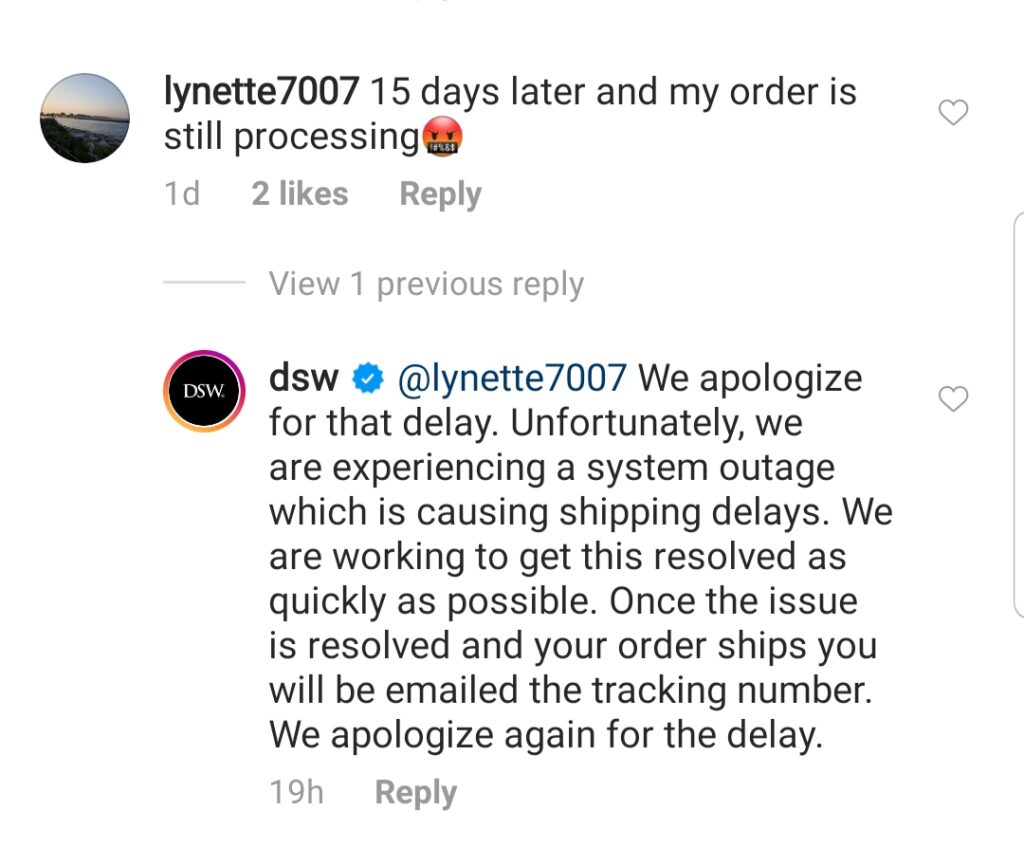A corporation has a responsibility to respond to their consumers whether each customer has a positive or negative concern. Responding to negative comments is especially crucial because it can determine a company’s reputation. With that said, a brand has to respond in a proactive manner, not a defensive one.
Proactive Responding
For example, the customer in the comments below voiced their anger at their late order. DSW however took the time to acknowledge the person’s concern and addressed the reasons behind the issue.

The Stukent reading states that timeliness, transparency and training are very important. I think that DSW did a fairly good job at hitting those requirements as their respond gives the customer an insight into the delay issue, instead of a roundabout answer. Although, a day had already passed, DSW made sure to respond to it.
Additionally, letting the customer know the direct reasons why their order has been late gives them an insight into situation that they did not have before. That information can make them more understanding, which helps keep brand loyalty when negative experiences come up.
Lastly, the employee that typed out the response is aware of the blame that the company must take responsibility for. The apology at the beginning and again at the end of the response pushes the narrative that “the customer is always right”. It also give DSW a good reputation as it shows that they are taking action to the fix the situation that more customers may also be experiencing.
Defensive Responding
Now lets look at the different approach that a defensive response takes. In this circumstance, a customer expressed their annoyance at a delay in a refund. At first glance the British Airways response may not be seen as defensive, but I think that it is. Their timeliness was well done as it seems that responded within the same day. However, their comment asking the customer to not send multiple tweets is a bit arrogant on the brands part.
That statement does not help the situation, or in their own words, it does “not speed up the process”. By making a customer feel limited in how many times they can contact the company they have a concern about, the sense of trust decreases. Although being bombarded by tons of messages is not the greatest, customers should never feel that they have a cap to how many times they can reach out for help.
Moreover, the airlines does not give the customer an explanation as to why the situation is occurring.
To continue, no where in that response did it say that British Airways takes accountability for the delay, nor did they apologize to their customer.

Ultimately, a proactive response means that the company takes accountability and apologizes for the negative experience. A defensive response on the other hand does not directly take responsibility, or show transparency.
For more examples of good and bad responses, check out this article!